Every year in front of gardeners and landscape designers is becoming an increasingly difficult choice - which decorative plants choose for a household site. Exotic and picky plants, the cultivation of which requires considerable effort and costs began to move to the back plan. Increasingly, the gardeners are approaching simpler, but no less beautiful cultures, the main advantage of which is unpretentious and endurance. It is exactly the features that the cornister is endowed - a gentle and colorful herbous shrub, which will certainly become an excellent decoration of any garden and a designer composition.
One of the most popular species of this plant is the Vasilnik Mustia - a herbaceous plant for an open soil, which can grow perfectly in the shade and delight with his long blossom resembling a lush and tender cloud.
In the proposed article, let us consider the Botanical description and the peculiarities of the Vasilistnik, as well as the characteristics of the popular varieties of this type of grassy culture. We note the important rules and nuances of landing and caring for the Vasilistnik made, as well as options for its use in the garden design.
Vasilitnik doing: Botanical description and features of the plant
A greater number of beautiful flowering ornamental plants requires special conditions for cultivation, especially this concerns the abundance of sunlight. However, not every gardener has an open and sunny household plot that remains to do if the courtyard comes out on the north side and the sun's rays are rare there. In this case, it is simply indispensable to be a cornisther, especially the species of this, which in recent years is simply a great popular among gardeners and landscape designers. This unique and very gentle plant looks beautifully on any flowerbed or in a garden composition, and his unpretentious character managed to evaluate many gardeners.
Vasilnikovnik doing is one of the most popular species of this plant, which is a perennial herbaceous, rhizome plant, which belongs to the iltike family. This family includes a large number of different cultures, but between many of them, the generic border is practically blurred, so it is sometimes difficult to distinguish it. The history of the appearance of the entire genus of Vasilistnik begins in distant times and is connected with one woman who was called Vasilisa. She was a sign and he treated warriors with healing herbs. In her honor, this plant was called.
Vasilitnik doing is grown as a garden plant from around the 19th century and all thanks to Jean-Marie Abbot, who found this decorative plant in China. In his part, a perennial herbaceous plant and got its name. The natural habitat of this species is the territory of Asia, namely China.
Vasilistnika Vasilica Description:
- Vasilitnik doing is a grassy, \u200b\u200blong-term, rhizuy shrub, who is considered one of the most popular and bright among his fellow. However, despite this, this blooming bush a little capricient when growing in the middle lane of Russia.
- The root system of this plant is quite powerful, creeping, with a large number of branches. Such roots allow decorative bush to firmly attach in any soil and not bad to winter during the period of harsh winters. And the presence of small tubers makes it possible to successfully apply the reproduction by the method of fissioning rhizomes.
- The root system, due to the smaller form, quickly expands, which leads to the formation of sufficiently large and lush curtains.
- The height of the corps of Vasilistnika is done can reach an average of 150-200 cm.
- The plant is formed by reprehensible, flexible and subtle escapes that have a small branch in the upper part.
- The branches in the plant are quite thin, but strong, have a gray-green or brown-green cortex.
- This type of cornistidal is distinguished by beautiful and openwork foliage, which is preferably placed on thin and short roots at the bottom of the plant. The sheet plate in shape resembles a wide triangle, twice or three times peristrays.
- Sheet plate smooth, saturated dark green color. From the reverse side there may be a slight omission. According to its form, the leaves of the Vasilistnika is reminiscent of the foliage of the catchment plant.
- The main decoration and decorative value of the vasalidnik of this species are flowers.
- Flowers are very small, terry shape without a bunny petals, are assembled into a large tall inflorescences of the battle-shaped shape, which are located on the top of the shoots and resemble loose and lush umbrellas. One such inflorescence can in diameter reach about 15-40 cm.
- During abundant flowering, the upper part of this herbaceous cook is reminiscent of a magnificent lilac cloud, which looks over the surface of the earth. It seems the vasilsman done during flowering very spectacularly and beautiful, that is why gardeners prefer to plant it on their homesteads.
- Flowers of this species can be a lilac-lilac or white when the variety of Vasilistnik is done by Album.
- The blossom of Vasilistnika doing starts in about mid-June or in early July and lasts on average two months, which also adds a plant of decorativeness and popularity.
- After the end of flowering on a bush, fruits begin to form in the form of a leaf seed, which has an extended shape.
- Vasilitnik doing is considered an unpretentious plant that can grow almost in any terrain and in any climatic zone. The plant perfectly winter with covers with frosts up to minus 40 degrees.
- To date, gardeners and landscape designers have increasingly began to use the Vasilisatnik doing when creating bright and unique garden compositions.
Popular Vasil Sitney Varieta - Basic Characteristics
Vasilisnik's cultivation nuances doing on the territory of Russia are increasingly interested in gardeners who get up before choosing a specific grade for planting. Vasilnikovnik doing is one of the most decorative species of the plant, which is represented by several bright and original varieties. Consider the main characteristic features of each variety of Vasilisnik this species.
- Vasilsnik Moving Hewits Double. This variety of Vasilistnika is done has very high decorativeness, as during flowering on the tops of shoots, whole clouds of terry colors are blooming, which resemble small balls. Chevitts Double and Lilac Color Color Double and Lilac Color. Openwork foliage of gray-blue color with green tump is located at the bottom of the coat. Sheet plate is dense, three-blade. In height, the plant of this variety can reach about 80-100 cm. Blossom is long, lasts from July to August. Actively used in landscape design.
- Vasilsnik Moving Album. Another bright and original variety of this decorative plant. A very gentle and openwork plant, which in height can reach about 100-120 cm, and in diameter it grows to 60-70 cm. The leaves of this variety of the Vasilistnik are very similar to the foliage of the catchment. The sheet plate is complex, reverse ovoid shape, there are horses. The shade of foliage is also quite unusual - gray-green. Moreover, on the back of the leaves a little lighter. Flowers from Vasilisnika made the album of white color, consist of long and thin stamens and unsparing petals. Flowers are collected in loose buggy inflorescences. Blossom starts at the end of June or in early July. It is an unpretentious and frost-resistant plant.
- Vasilitnik doing Splanddid. This title is often called the entire type of plant. Often they define a group of cornisters with white flowers.
Using on its site several varieties of Vasilistnika done, everyone can create bright and unique compositions that will allocate your yard among the neighboring.
Prompture of Vasilist Movement: The most common ways
The cultivation of the cornistant of this species is so simple that even an inexperienced gardener will cope with elementary actions. It is unpretentious and undemanding when landing and leaving attracts gardeners and designers who seek to plant this wonderful plant on their plot. To do this, it is necessary to know the basic variations of the culture. In this case, the Vasilisnik made can be multiplied by the following ways: seeds, the division of rhizomes and cuttings. Each method has its own distinctive features and rules that are important to consider to obtain a beautiful and flowering plant.
Prompture of corneeling vasilist
- This method of reproduction is used by gardeners most often, as it takes a lot less time and does not require additional effort and costs.
- The reproduction of cornistidant is reproducing the division method recommended in spring until the actual growth of shoots.
- First of all, it is necessary to carefully wock an adult plant in a circle, then the shovel is ponded the rhizome and pull out the plant. Shake the root system slightly to sprinkle soil.
- You can divide with a sharp knife or a secateur.
- The number of deteen can be different, it all depends on the size of the root system. The main thing is that each part had several healthy and strong shoots and rigging growth.
- So that young plants are immediately not subjected to fungal diseases, the locations of the sections must be poured with poured charcoal.
- The deteen obtained are immediately planted into the prepared wells, which are at least 50 cm from each other.
Vasilistnik Vasilica Detaculation
- In addition to the above method, it is possible to use reproduction with cuttings to obtain young seedlings of Vasilistnik.
- Experienced gardeners recommend spending it in spring time.
- First of all, in the spring, after complete warming up air and soil, on an adult plant you need to select high-quality and healthy shoots and cut cuttings from them for planting.
- The length of one cutter should be approximately 8-10 cm. In this case, there must be 2-3 interstices.
- To accelerate the rooting of the cuttings, the lower cut is recommended to process with special solutions of the root former, after which the finished cuttings can be planted into the ground.
- Most often, gardeners use containers filled with soil-peat mixture.
- The cuttings root under a small angle.
- After landing, the containers are recommended to cover with a film or glass.
- In open soil, young seedlings are planted after rooting.
Vasilisnik Vasilisnik's seed
- This variant of the breeding of the Vasilistnik is done during cultivation in the middle lane is used much less frequently. This is due to the fact that the seeds are tied only in plants that grow on the sun itself.
- It is also worth remembering that the germination of seeds of this plant is quite low. Therefore, before sowing, it is recommended to process the planting material in growth stimulants.
- Collect the seeds of Vasilisnik this species is needed in the fall and immediately soaring in an open ground, in a pre-prepared bed.
- In winter, the seeds pass the natural process of stratification and the first seedlings can be waiting for the spring.
- In about the middle of the summer, sowing must need to break down and already the next year at the beginning of the summer, the Vasilsnik Music can bloom.
Vasilistnika Predewa Landing - Phased Process Description
To plant and grow in its plot, Vasil Sistemnnik made is absolutely not difficult, the main thing is to fully fulfill all the main actions. First of all, it is worthwhile to conduct a preparatory work with a special care, which includes the choice and purchase of planting material, as well as the preparation of a site for planting a plant into an open ground. We note the important rules for planting the plant.
Stage 1. Choosing and purchase of Vasilistnika seedlings
- First of all, each gardener needs to think about buying a high-quality and healthy planting material Vasilistnika doing. After all, it is from this that will depend on the further full growth and development of the plant.
- Most often preferences are given to buying ready-made seedlings, because the independent cultivation of young plants by reproduction is a sufficiently troublesome process.
- You can buy a Vasilnikovnik doing in a specialized garden center or kennel, where professionally deal with the cultivation of plants for sale. It is worth paying attention only to large stores where high-quality seedlings are sold.
- Before buying, it is important to carefully examine the seedlings. They should not be visible damage, yellow foliage and mold traces on the soil.
Stage 2. Place selection and soil preparation for Vasilist Moving
- Vasilitnik doing prefers to grow at open and sunny places where his bloom will be brighter.
- You can also plant plant saplings and small shadow.
- This culture prefers sections that are closed from strong winds and drafts. It is also worth paying attention to how groundwater is located at what level. This plant does not like moisture stagnation in the roots.
- Soils Vasilitnik loves light and loose, it is desirable to prepare a nutritious and permeable soil.
- Immediately before landing, the selected area is recommended to carefully switch, explode and focus with complex mineral fertilizers.
Stage 3. The process of planting a cornistant is done in an open ground
- In the open soil, the seedlings of this plant are recommended to land in the spring, so bushes will have to be rooted and stump until the onset of cold weather.
- First of all, it is necessary to prepare landing pits. Their size should be approximately 1.5-2 times the root system of the plant along with an earthen room. If you sit down several plants nearby, be sure to make the distance between the lines of at least 50-60 cm.
- At the bottom of each pit, put a layer of drainage. To do this, you can use small stones, clean sand or broken bricks.
- In the soil from the pit, be sure to add some complex mineral fertilizer and humus, mix everything thoroughly.
- Saplings are also necessary to hide abundantly before landing to alleviate the extraction and not damage the roots.
- Saplings of Vasilistnika of this variety are planted on a small holly of the soil, after which it is sprinkled with soil and slightly pressing with their hands. It is important to remember that the root neck should not be gluned.
- After landing, young plants watered abundantly.
Vasilistnik Growing Agrotechnics: Secrets and Nuances of Care
The care of the Vasilistnik is very simple and lies in the following actions:
- Watering. The humidity of the soil is an important indicator for the full growth of the plant. To flowers are brighter and smell better, you need to water often and abundantly. If summer was arid, the amount of irrigation increases.
- Loosening and mulching. After each irrigation, it is recommended to loosen the soil in the rigorous circle. It is necessary to do it very carefully. For moisture less evaporated, the soil around the plant can be meditated. For this use peat or humus.
- Podrel. Like other blooming ornamental plants, Vasilsnik Moving needs fake. However, it is necessary to conduct them only 3 years after landing. Then, each spring under plants is made by complex mineral fertilizer with nitrogen content.
- Trimming. Crop this plant is recommended to be almost under the root every fall so that the shoots do not climb under the severity of snow. In the spring branch grow again.
- Shelter for the winter. And although the cornister is done and is considered to be a hardy plant, before the winter onset, it is still recommended to climb the soil around it with peat and foliage.
Vasilstendant doing - Photo
This decorative plant will become an excellent decoration for any garden plot, as it has the vivid features of the appearance and unpretentiousness in care, which is undoubtedly appreciated by gardeners.

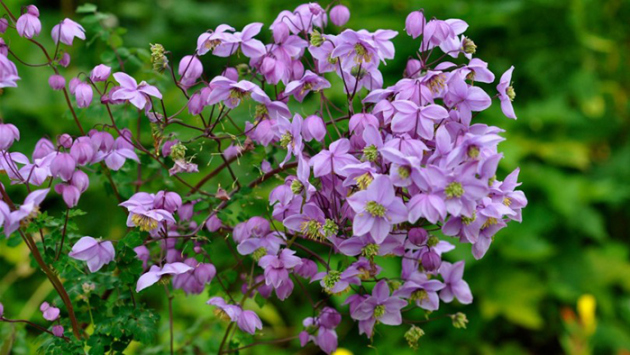
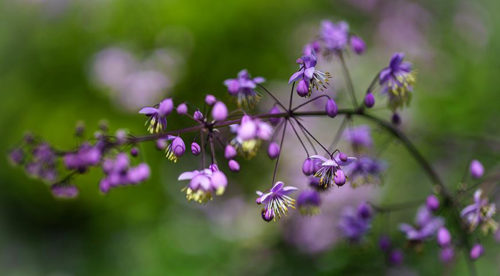
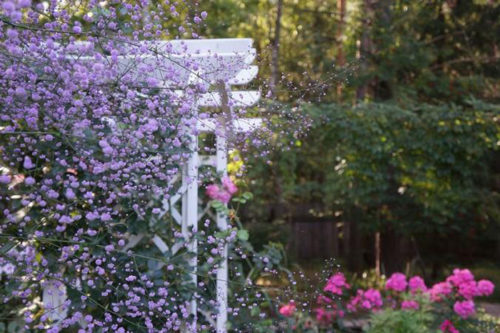
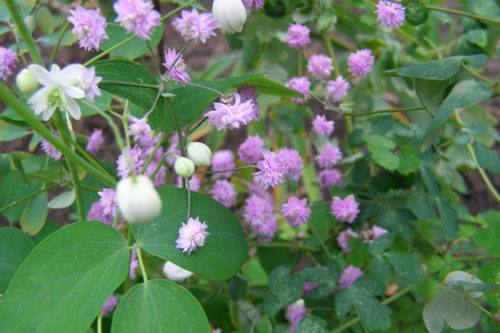

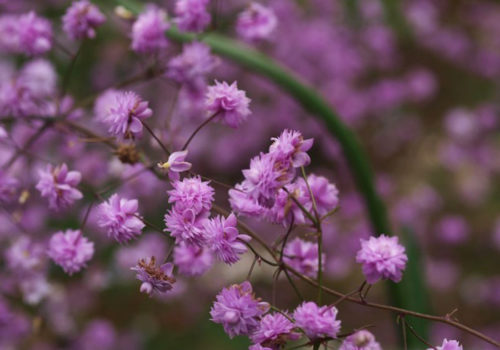

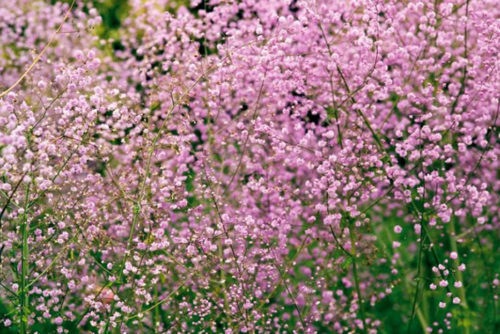


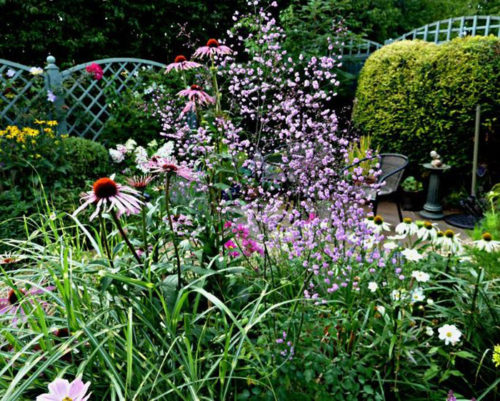
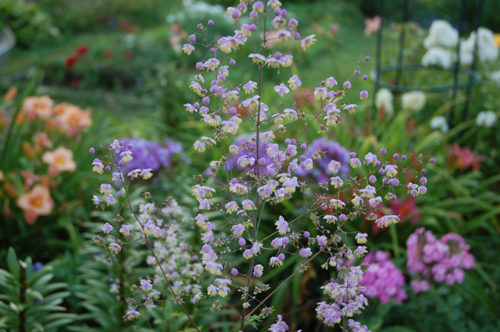

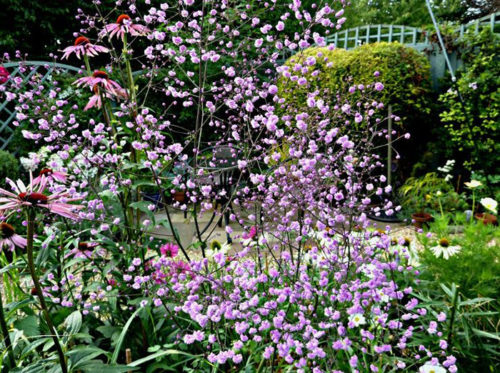
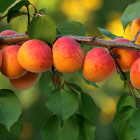











 Start a discussion ...
Start a discussion ...